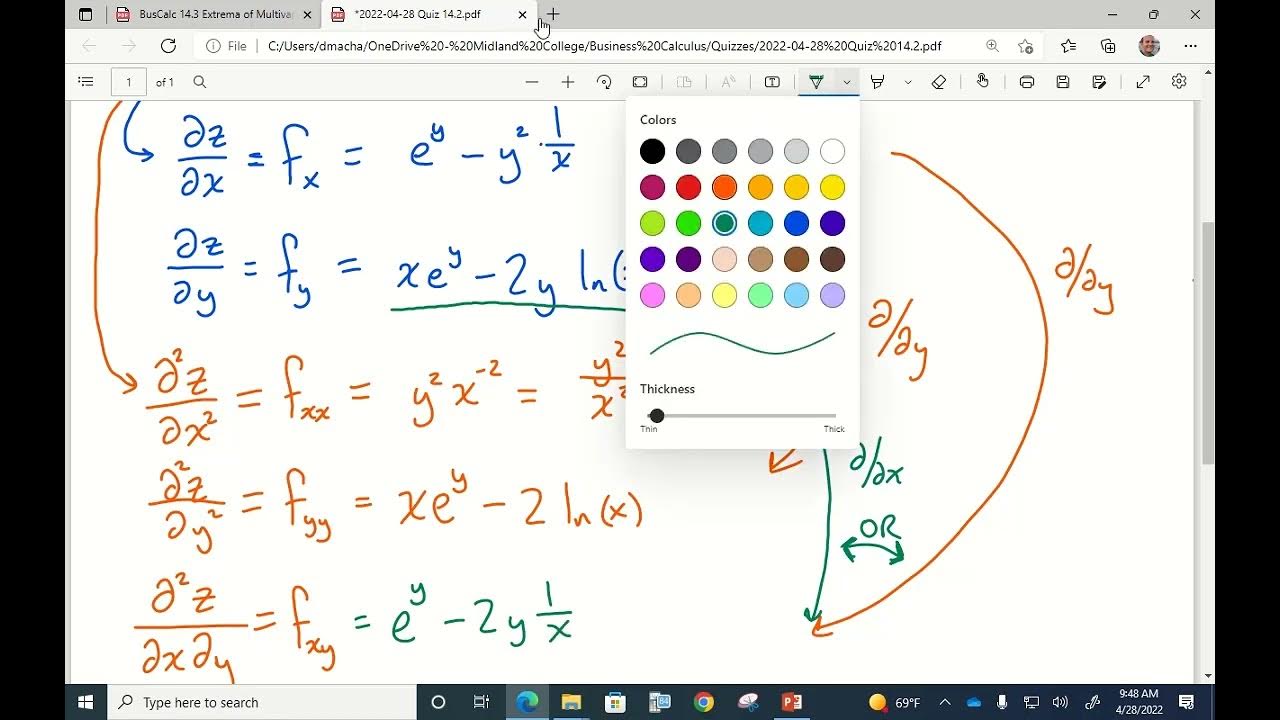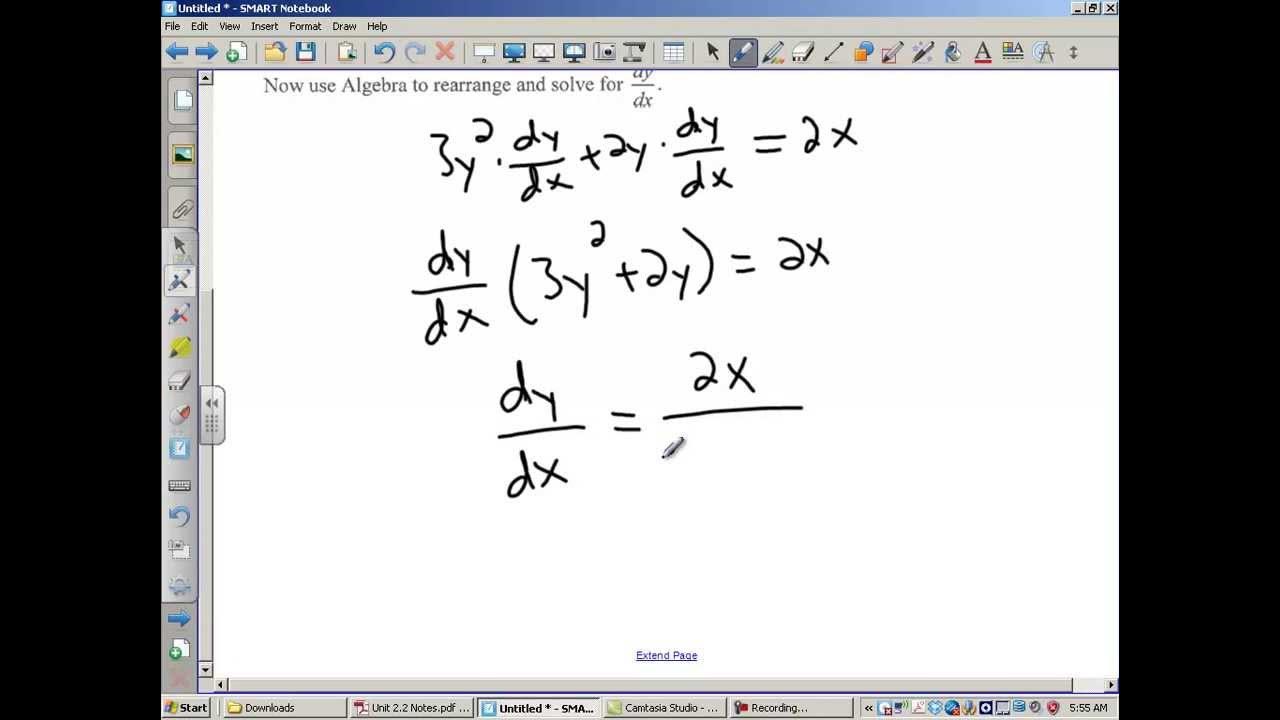Calculus - Order and Degree of a Differential Equation | Don't Memorise
TLDRThis video script introduces the fundamental concepts of differential equations, focusing on the differentiation of functions with respect to an independent variable. It explains the process of finding the derivative of a function, exemplified by y = x^2, and then delves into the definitions of order and degree in the context of differential equations. The script provides clear examples to illustrate these concepts, emphasizing that the degree is only defined for polynomial equations in derivatives. The video promises to solve examples in the next installment to deepen the understanding of these mathematical principles.
Takeaways
- 📘 Differentiation is the process of finding the derivative of a function with respect to an independent variable.
- 🔢 For example, the derivative of y = x^2 is given by dy/dx = 2x.
- 📊 A differential equation involves variables and derivatives of the dependent variable with respect to the independent variable.
- 📝 There are two key concepts in differential equations: order and degree.
- 📈 The order of a differential equation is the order of the highest order derivative of the dependent variable with respect to the independent variable.
- 📉 Example: For d^3y/dx^3 = f(x), the order is 3.
- 🔍 The degree of a differential equation is the highest power of the highest order derivative involved, provided the equation is a polynomial in derivatives.
- 🔢 Example: For (d^3y/dx^3)^1 = f(x), the degree is 1.
- ⚠️ The degree is only defined if the differential equation can be written as a polynomial equation in derivatives.
- 📚 Understanding these concepts of order and degree helps in classifying and solving differential equations more effectively.
Q & A
What is the derivative of the function y = x^2 with respect to x?
-The derivative of y with respect to x, denoted as dy/dx, is 2x.
What is a differential equation?
-A differential equation is an equation that involves derivatives of the dependent variable with respect to the independent variable.
What is meant by the 'order' of a differential equation?
-The order of a differential equation is the order of the highest derivative of the dependent variable with respect to the independent variable in the equation.
What is the order of the differential equation involving the third derivative of y?
-The order of the differential equation involving the third derivative of y is three.
What is the order of a differential equation with the highest derivative being the second derivative?
-The order of a differential equation with the highest derivative being the second derivative is two.
What is the degree of a differential equation?
-The degree of a differential equation is the highest power of the highest order derivative involved in the equation, provided the equation is a polynomial in derivatives.
Is the degree of a differential equation always defined?
-No, the degree of a differential equation is only defined if the equation is a polynomial in derivatives.
What is the degree of the differential equation d^3y/dx^3 = 1?
-The degree of the differential equation d^3y/dx^3 = 1 is one, as the highest order derivative is to the power of one.
How is the degree of a differential equation determined when there are multiple terms with the same highest order derivative but different powers?
-The degree of a differential equation is determined by the highest power of the highest order derivative present in the equation.
Why might the degree of a differential equation not be defined in some cases?
-The degree of a differential equation might not be defined if the equation is not a polynomial in derivatives, meaning it does not involve terms raised to powers.
What is the significance of understanding the order and degree of a differential equation?
-Understanding the order and degree of a differential equation is crucial for classifying the equation and determining the appropriate methods for solving it.
Outlines
📚 Introduction to Differential Equations
This paragraph introduces the concept of differentiation of a function with respect to an independent variable, using the example of y = x^2. It then explains the formation of a differential equation, which includes the derivative of the dependent variable y with respect to the independent variable x. The paragraph further delves into the fundamental concepts of 'order' and 'degree' in differential equations, illustrating them with examples. The order is defined as the highest order of the derivative present in the equation, while the degree is the highest power of that derivative, provided the equation is a polynomial in derivatives.
🔍 Understanding Order and Degree Further
Building upon the initial explanation, this paragraph continues to explore the order and degree of differential equations, emphasizing the importance of polynomial form for the degree to be defined. It provides examples to clarify the concepts, showing how to identify the order by looking at the highest derivative in the equation and how to determine the degree by examining the highest power of that derivative. The paragraph also points out that if an equation is not a polynomial in derivatives, the degree is not defined, as illustrated with a non-polynomial example.
Mindmap
Keywords
💡Differentiation
💡Function
💡Independent Variable
💡Dependent Variable
💡Derivative
💡Differential Equation
💡Order of Differential Equation
💡Degree of Differential Equation
💡First-Order Derivative
💡Second-Order Derivative
Highlights
Introduction to differentiation of a function with respect to an independent variable.
Differentiation of the function f(x) = x^2 results in dy/dx = 2x.
Explanation of differential equations involving derivatives of dependent variables with respect to independent variables.
Differential equations are defined by the order and degree of their highest derivative.
Order of a differential equation is the highest order of its derivative.
Example provided to illustrate the concept of order in differential equations.
Degree of a differential equation is the highest power of its highest order derivative.
The degree is only defined for polynomial differential equations in derivatives.
Examples given to demonstrate how to determine the degree of a differential equation.
Clarification on why the degree is not defined for non-polynomial differential equations.
Differentiation process explained for finding first and second order derivatives.
Importance of understanding both order and degree for classifying differential equations.
Differentiation of a function y = f(x) leads to dy/dx = f'(x), indicating a first order derivative.
Further differentiation results in d²y/dx² = f''(x), known as a second order derivative.
A differential equation with the highest order derivative of 3 is classified as third order.
A differential equation with the highest order derivative of 2 is classified as second order.
A differential equation with the highest order derivative of 1 is classified as first order.
Upcoming video promises to solve examples for a deeper understanding of differential equations.
Transcripts
Browse More Related Video

Order and Degree of Differential Equations | Differential Equations #order #degree #differential

Differential Equations - Introduction - Part 1

Implicit Differentiation Second Derivative Trig Functions & Examples- Calculus

BusCalc 14.3 Extrema of Multivariable Functions

Differential Equations with Velocity and Acceleration (Differential Equations 7)

Implicit Differentiation Day 1
5.0 / 5 (0 votes)
Thanks for rating: